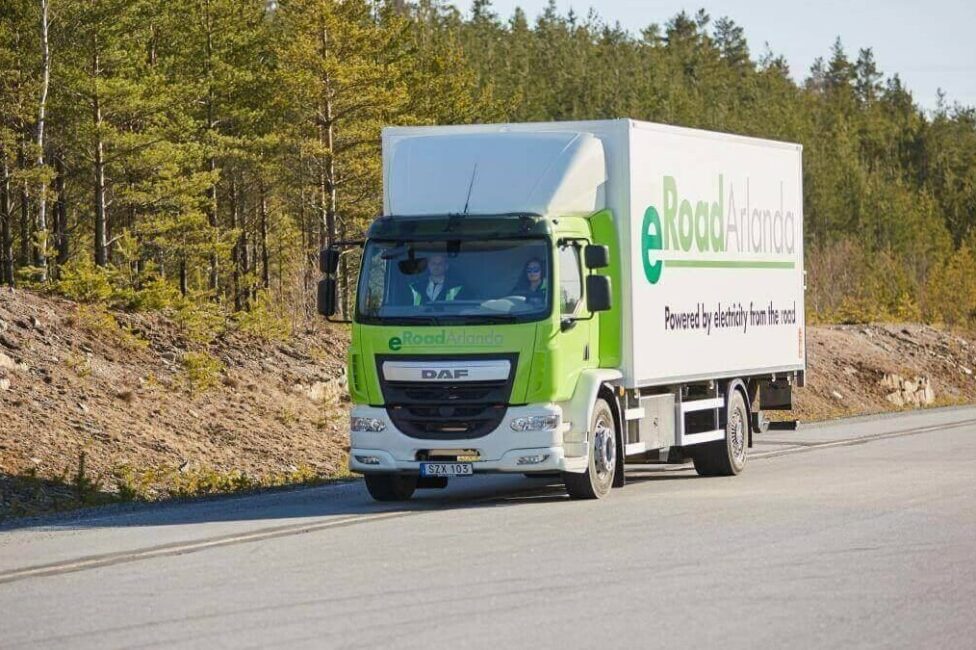Electric rails could offer a way of charging a vehicle while driving

Imagine vehicles connected to electric rails embedded in the midst of traffic lanes, so that they can be charged effortlessly, simply by driving. This is precisely the concept of the eRoadArlanda, a two-kilometer stretch of specially built track in Sweden.
In order to be able to charge one’s vehicle while driving, it must be equipped with a kind of skid placed at the end of a mobile arm attached to the bottom of the chassis, which automatically attaches itself to the rails laid out along their route. Initially, this system is being tested on trucks, but the idea is to adapt it to buses and electric cars.
Technically the arm detects when the vehicle is over the rail and then is stowed automatically. Similarly, if the vehicle changes course, it disconnects without any action of the driver.
The project is part of the Swedish government’s plan to have a completely fossil fuel-free transportation system by 2030. More examples of this type of road are expected to be seen throughout the country, with the goal of reaching up to 2,000 km of electrified road by 2030.
The system could inspire other players in the sector, although, until now, ground-based charging systems being tested have been mainly induction-based. Earlier this year, the Stellantis Group announced that it was testing an advanced wireless and inductive energy transfer technology for electric cars in Italy, on a circuit specially created for this type of pilot program. This is a forerunner of the type of infrastructure that could be installed on certain roads in the future, allowing for considerable gains in range. It is in fact a technology based on a succession of loops placed under the asphalt that transmit energy directly to the vehicles that drive on them. However, each vehicle must be equipped with a dedicated “receiver” that conducts and transfers the energy from the road infrastructure directly to the electric motor. A project based on the same principle, in Karlsruhe, Germany, entails a whole stretch of road being fitted out, over a few hundred meters, to supply energy to the city’s electric buses while they are driving.
Meanwhile Spanish company Premium PSU has unveiled a brand new system designed to charge a car by positioning it directly on a dedicated station, with this system working equally well on both moving and stationary vehicles. BMW also released its own wireless charging solution for stationary vehicles, aimed at the brand’s plug-in hybrid models.
By induction or with the help of a skid, the solution to boost the range of electric cars will perhaps one day be found in the road itself.














